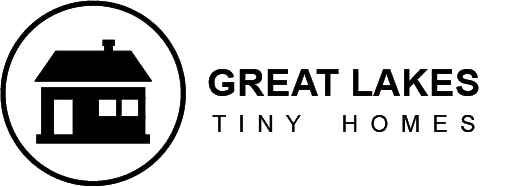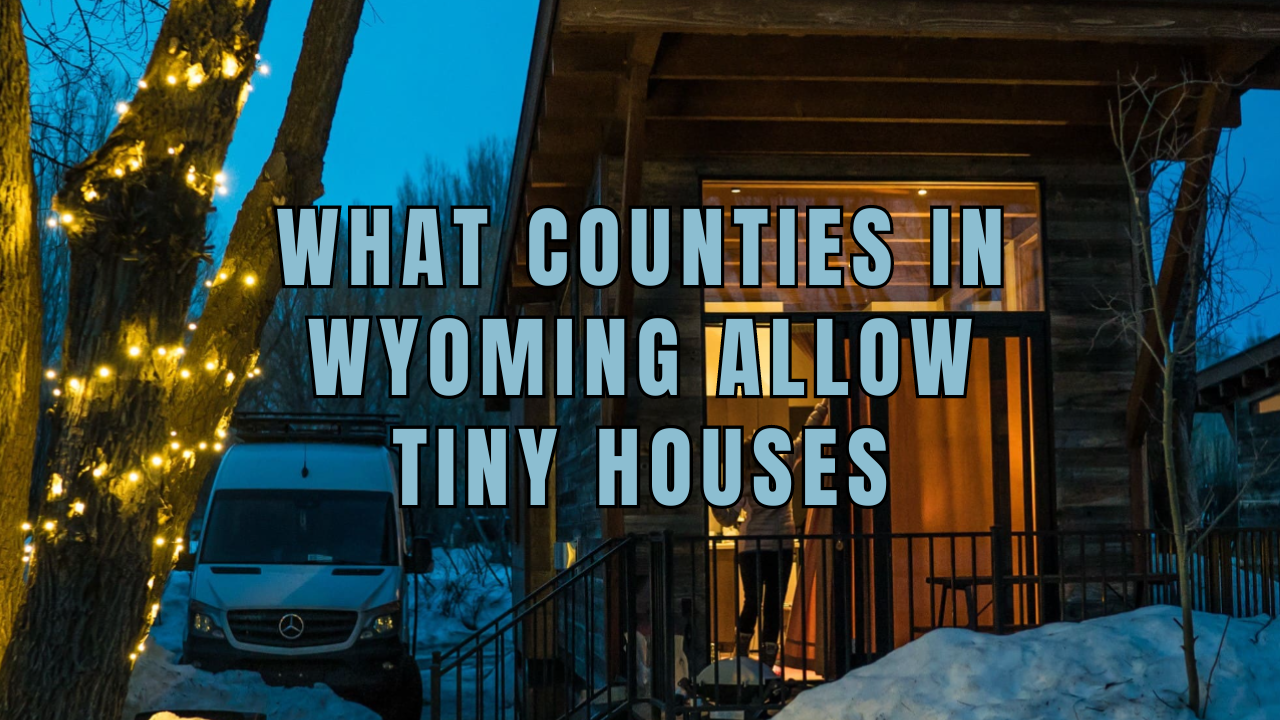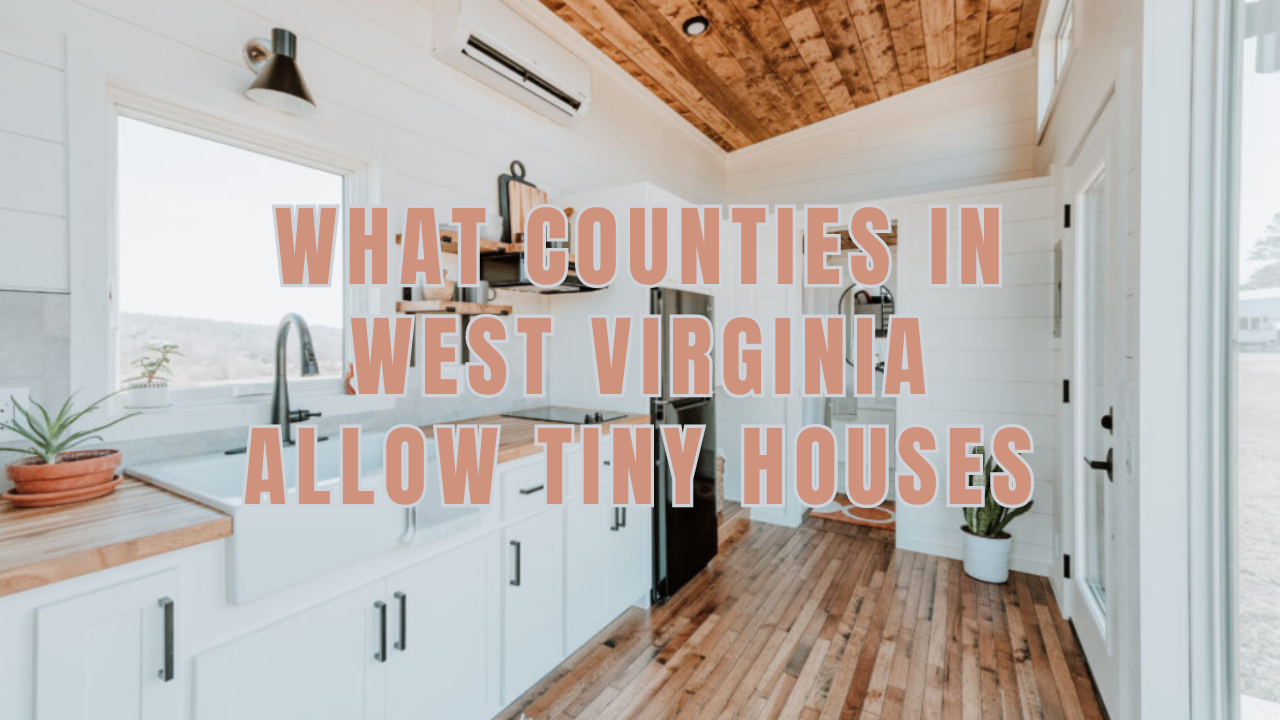Are you interested in building a tiny house in Maryland? It’s fundamental to grasp the rules and regulations that govern this growing trend. While tiny house living is legal in Maryland, there are specific counties with laws in place that you need to consider before you begin construction.
In this article, we will explore which counties in Maryland allow tiny houses and what rules and regulations you need to be aware of. So, if you’re dreaming of building a tiny house in Maryland, keep reading to find out where to make that dream a reality.
Tiny House Prices in Maryland
After deciding to build a tiny house in MD, you are undoubtedly interested in costs that will meet your budget and tiny home expectations.
We provide options for every living style and price range to assist you in coming one step closer to your living project. Take a look at the Maryland tiny home sales!
What Counties in Maryland Allow Tiny Houses?
The laws and approval of small dwellings in Maryland differ from county to county. Some counties haven’t addressed the matter, while others have special ordinances permitting tiny dwellings.
It’s crucial to remember that small in a gray zone in the state of Maryland, as there are no explicit laws governing them. Consequently, it’s essential to understand the laws and guidelines surrounding MD small homes, including zoning restrictions, construction norms, and legal matters.
Montgomery County
Montgomery County’s residential zoning ordinance permits building tiny houses and linked units. In addition, the council decided to amend the city’s zoning regulations to provide more affordable homes for pensioners and low-income citizens. The adjustments allow neighborhoods to have one ancillary unit per 300 or 500 feet of the roadway. The Metropolitan Washington Council of Governments projects that the area will need an extra 575,000 housing units by 2045.
More than a thousand locals concluded a petition against these alterations. Some pointed out that the new law would provide the freedom for homeowners to do what they want in their backyards during a demonstration in favor of it.
Baltimore County
Consider owning an eco-friendly tiny house built in Baltimore at an affordable price. These tiny houses can be easily transported on trailers. Despite their small size of less than 1,000 square feet, they offer a comfortable living space, kitchen, bathroom, and sleeping loft.
Civic Works, a non-profit organization, strives to provide low-income individuals and families with access to affordable housing.
Garrett County
Garrett County is the best place to live off the grid. Though the search results don’t disclose specifics, this hints that it has more lax laws for tiny dwellings.
Tiny House Regulations And Rules In Maryland
In Maryland, regulations for tiny houses vary by county and municipality.
Most areas require minimum square footage for residential structures. Which makes legally building and living in a tiny house challenging.
Carefully revising zoning laws, building codes, and land use regulations will grant the success of your Maryland tiny house project. Check local authorities and obtain the necessary permits!
Permanent Structure Rules
Maryland’s zoning laws and the International Residential Code (IRC) influence the rules governing tiny homes as permanent buildings. You need to follow specific rules and requirements:
- Local governments have different policies; for example, Montgomery County’s residential zoning rule allows tiny houses.
- New residences require at least 320 square feet, with usable rooms requiring a size of at least 120 square feet, according to the state’s building code.
- Maryland complies with the IRC and uses Appendix Q of the 2018 IRC, which addresses rules for small dwellings under 400 square feet.
- Living in a tiny home on a foundation for a long time is legal.
- Typically, regulations demand that you connect to water or sewer systems in your community.
- The ceiling height in a habitable space requires at least 6 feet 8 inches, with a minimum of 6 feet 4 inches in bathrooms and kitchens.
- The IRC specifies regulations for lofts applied as living or sleeping areas.
- Tiny home specifications for emergency escape and rescue exits are not negotiable.
Temporary Structure Rules
Tiny homes on wheels also known as recreational vehicles (or RVs), are considered temporary structures. The following rules apply to them:
- Vehicle dimensions on public roads vary according to the Maryland Department of Transportation (MDOT) and also applies to THOWs.
- Different permits are necessary according to where the tiny home is and how will be used.
- The location of THOW parking operates by local construction laws and zoning ordinances.
Transitional Structure Rules
Maryland’s rules do not define transitional structures, which exist between temporary and permanent settings. Nonetheless, the following information is pertinent:
- Transitional small homes would still have to abide by state-enforced construction rules and municipal zoning laws.
- A transitional tiny house needs to be built and placed with the proper permissions and land use guidelines met.
Where Can I Build A Tiny Home In Maryland?
Your small house’s place is vital. Find a licensed tiny home builder to help you with the procedure, handle every document, and guarantee that your home satisfies all construction standards.
Constructing a tiny home is a large project, but if you plan, it doesn’t have to be unpleasant. The following are common areas for small homes:
- RV parks
- National Parks and campgrounds
- Tiny house communities
- Private properties
Tiny House Communities in Maryland
Tiny homes incorporate Maryland’s housing environment in places like Liberty Village and Blue Moon Rising.
Liberty Village
Liberty Village is a cohousing community that practices ecology close to Frederick, Maryland. Currently living in this intended intergenerational community are 22 children, adults as old as 83, and some free-range hens and baby goats.
Built on 8 acres of land, the neighborhood consists of 18 tiny dwellings. In addition to the many parks and common spaces available to members, there is a common house where parties, potlucks, and other social gatherings are held. 15 acres of immaculate natural wetlands, forests, and meadows surround all of this, waiting for you and your family and friends to explore.
Blue Moon Rising
In McHenry, Maryland, there is a creative and eco-friendly small home community called Blue Moon Rising. Situated in the picturesque highlands of Garrett County, it provides a distinctive and eco-friendly residential choice.
In addition, Blue Moon Rising offers plenty of group activities in and around Deep Creek Lake, including swimming, white-water rafting, horseback riding, skiing, and even sleigh rides during the holiday season.
Tiny House Builders Near Me
You can pick your ideal home without searching for local builders thanks to Great Lakes Tiny Homes, which provides a selection of tiny home designs with nationwide delivery.
Additionally, RV Industry Association (RVIA)-certified constructor Great Lakes Tiny Homes focused on the strictest adherence to development, safety, and regulatory rules for small homes and to the highest production standards.
Do I Need a Certified Builder?
You do, indeed.
Dealing with a manufacturer who gained RVIA certification, such as Great Lakes Tiny Homes, guarantees that the tiny house you acquire is built according to laws and regulations.
It offers tranquility since it guarantees that the materials in your home are high-quality, long-lasting, and secure.
In collaboration with a registered builder, it offers access to insurance policies and financing possibilities. Your tiny house promises to be a safe and livable space provided it complies with RVIA requirements.
FAQs
Can You Make a Tiny House in Maryland Your Main Residence?
Of course, you can live in a tiny house permanently in Maryland.
However, keep in mind that local laws and ordinances differ. The best course of action is to find out whether your small home complies with all applicable laws and regulations, including inspection requirements, and contact your local zoning and authorities.
To enjoy the advantages of a more straightforward, environmentally friendly living in Maryland, do your research and collaborate with licensed builders.
What Is the Maryland Minimum Square Footage Required for a House?
There requires a minimum of 70 square feet of floor space and a minimum of 7 feet of breadth. Any room needs a minimum of 50 square feet of floor area. Violating this section acts as a second-degree misdemeanor, with the same penalties as specified in 775.082.
In Anne Arundel County, Maryland, Are Tiny Houses Allowed?
Zoning regulations in Anne Arundel prohibit tiny dwellings. According to the county’s zoning regulations tiny houses can parked only on mobile home parks licensed by the county. They can not be parked on your land.
Conclusion
Each state has its own rules and regulations regarding tiny houses, and Maryland is no exception. In Maryland, tiny houses are classified as accessory dwelling units (ADUs) or recreational vehicles (RVs), depending on their size, foundation, and mobility. Each category has its own zoning and building requirements, which can vary from county to county. Some of the counties that allow tiny houses in Maryland are Montgomery, Baltimore, and Garrett.
Some of the rules and regulations to consider are minimum square footage, setbacks, utility connections, parking, and permits. By following these rules and regulations, one can enjoy the benefits of living in a tiny house in Maryland without violating the law or compromising the safety and quality of life.





